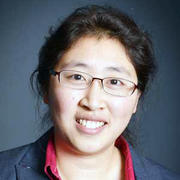
The ultra-cold molecule pioneer is crowned the Morris Kahn Associate Professor of Chemistry and Chemical Biology and of Physics
Kang-Kuen Ni's contolled fusion of two individual atoms—sodium and cesium—into a single molecule won her the cover of the May 2018 print edition of Science. But the achievement ricocheted beyond the traditional scientific audiences: cue puns on quantum leap.
In the last year and a half, the young professor's feat earned features in Chemistry World, Wired, NBC News, The Harvard Gazette, Nature, and Physics World. This is not a complete list.
In nature, sodium and cesium are unwilling partners; both swing positive and, like like poles of two magets, they repel more often than react. But with Ni's technique—dubbed a moleular "Parent Trap," "atomic dodgeball," and "the smallest scientific breakthrough"—she and her team can force a chemical reaction to occur.
Ni discusses her research and recent Beckman Young Investigator Award
When atoms are cooled to less than a thousandth of a degree above absolute zero, Ni said, they enter an isolated, quantum state. Frozen atoms are easier to manipulate: The team can trap their slowed sodium and cesium in two laser beams, which they then merge to force a chemical reaction to occur. When the light show ends, more often than not, a molecule is born.
Ultra-cold atoms are also calm enough for more intense study. In that atomic tundra, new quantum phases—beyond the familiar gas, liquid, and solid—emerge, providing a platform to study chemical reactions and physical interactions between atoms with greater precision. Since everything in this world (and beyond) is built from atoms colliding and combining, these studies could lead to fundamental new insights into, well, everything.
"We are embarking to map out this strange new world of ultra-cold quantum chemistry and ultra-cold molecules," Ni said.
In the meantime, Ni’s work could specifically advance quantum computing. Since ultra-cold two-atom molecules can carry masses of quantum information for long periods of time, they make enticing candidates as qubits, the building blocks of quantum computers.
“The direction of quantum information processing is one of the things we’re excited about,” Ni said. “We need molecules for all different applications in our daily lives. However, the molecular space is so huge, we cannot sufficiently explore it with current computers. If we have quantum computers that could potentially solve complex problems and explore molecular space efficiently, the impact will be large.”
